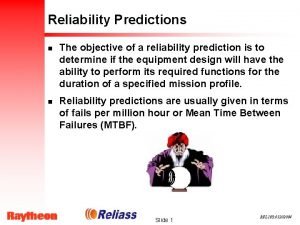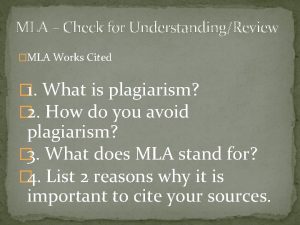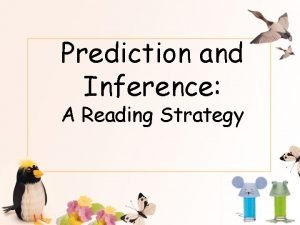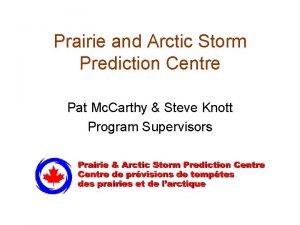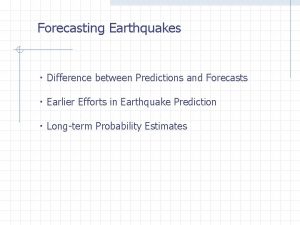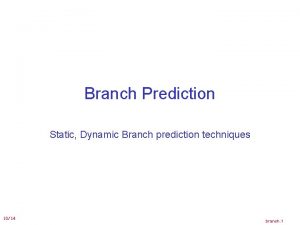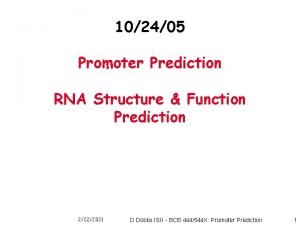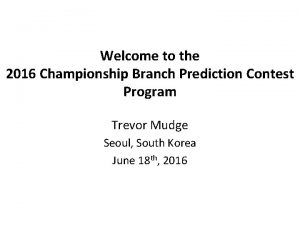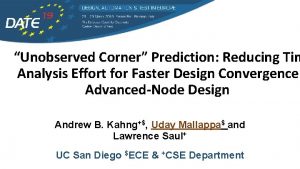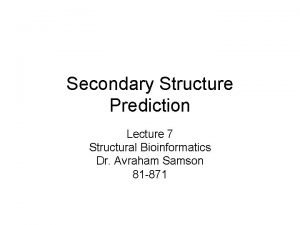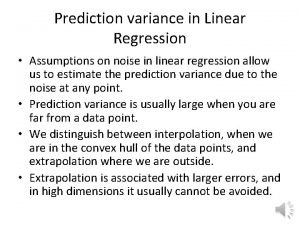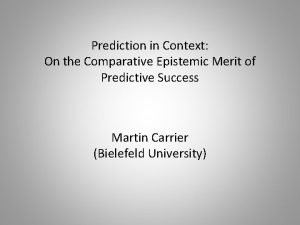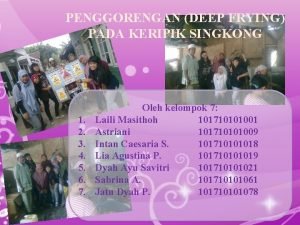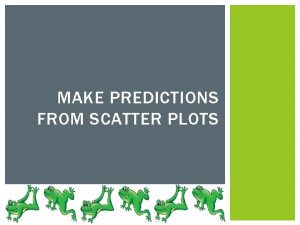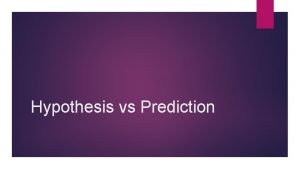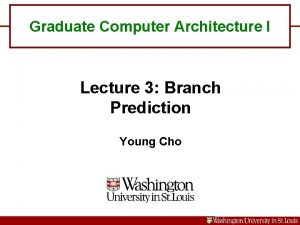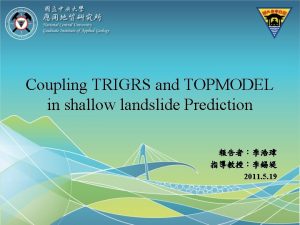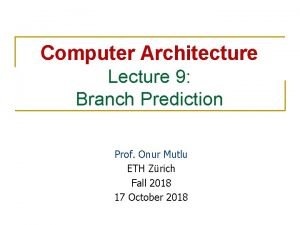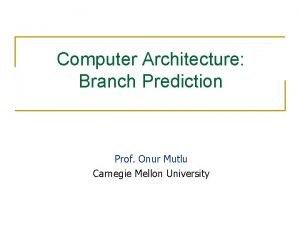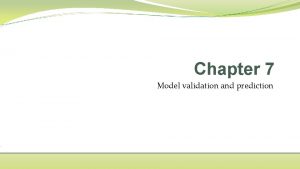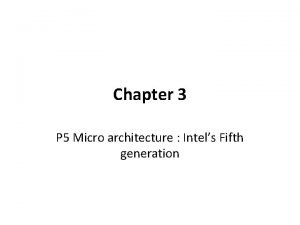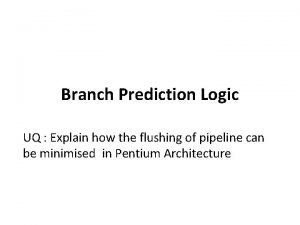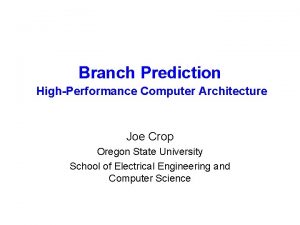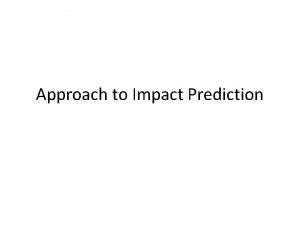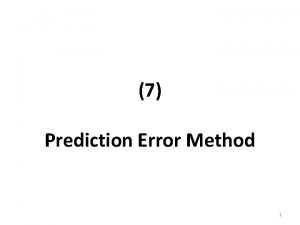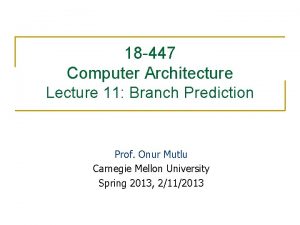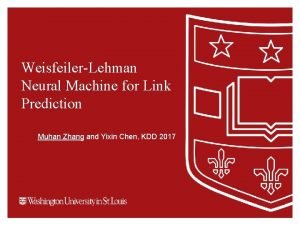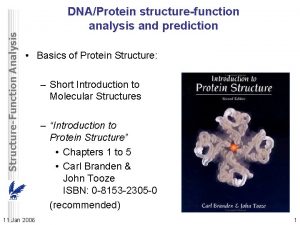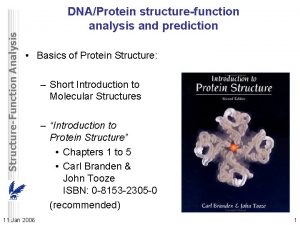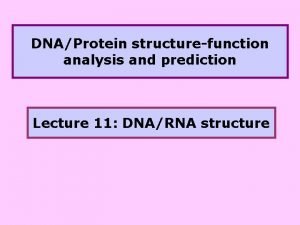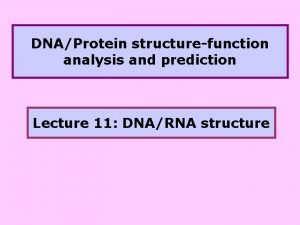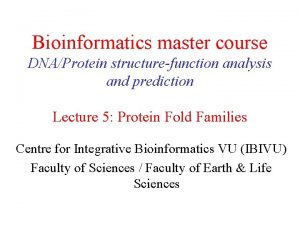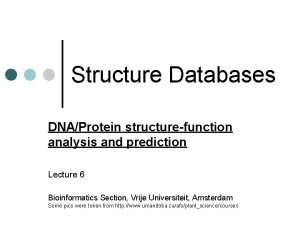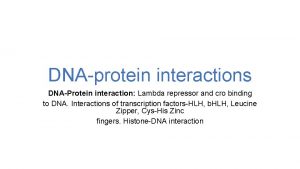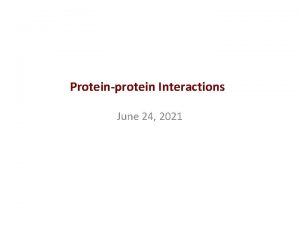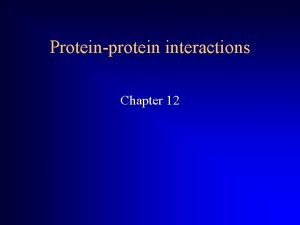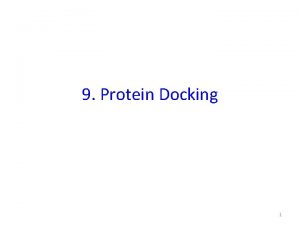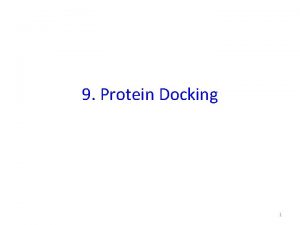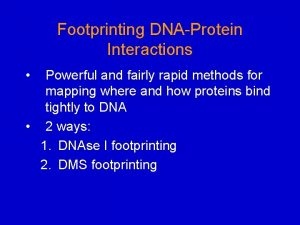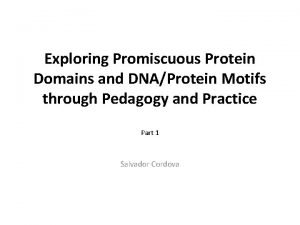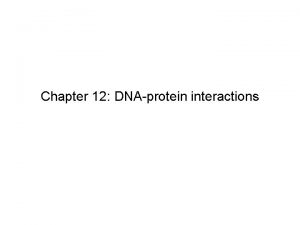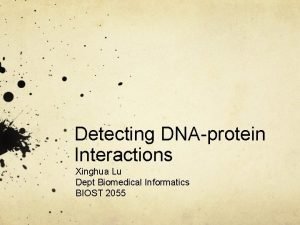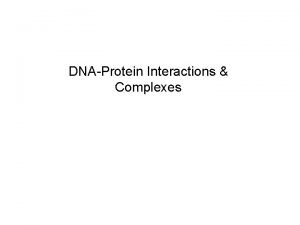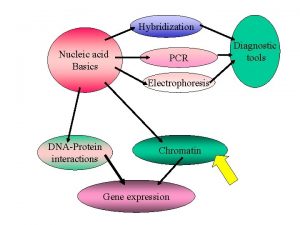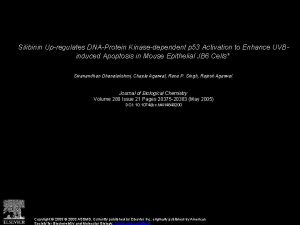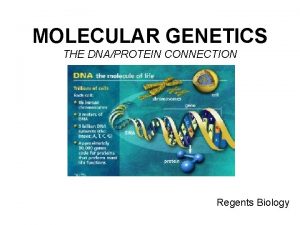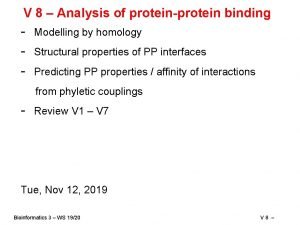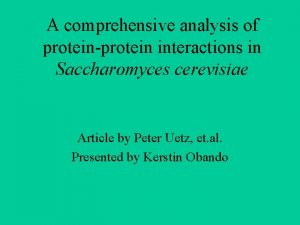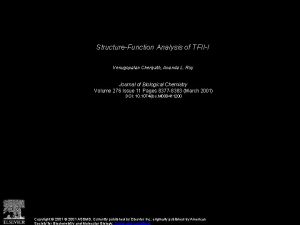StructureFunction Analysis DNAProtein structurefunction analysis and prediction Proteinprotein



![Structure-Function Analysis Complexation Reaction • A + B AB Ka = [AB]/[A] • [B] Structure-Function Analysis Complexation Reaction • A + B AB Ka = [AB]/[A] • [B]](https://slidetodoc.com/presentation_image_h/2e0e7baa2dc7826b51367ab10b5d83af/image-4.jpg)

































- Slides: 37

Structure-Function Analysis DNA/Protein structure-function analysis and prediction • Protein-protein Interaction (PPI): • Protein-protein Interaction – Interfaces – Solvation – Energetics – Conformational change – Allostery • Prediction: – Gene Cluster – Phylogenetic Profile: – Rosetta Stone – Sequence co-evolution – Random Decision forest • Docking [ Examples ] 17 Jan 2006 1

Structure-Function Analysis PPI Characteristics • Universal – Cell functionality based on protein-protein interactions • Cyto-skeleton • Ribosome • RNA polymerase • Numerous – Yeast: • ~6. 000 proteins • at least 3 interactions each ~18. 000 interactions – Human: • estimated ~100. 000 interactions • Network – simplest: homodimer (two) – common: hetero-oligomer (more) – holistic: protein network (all) 17 Jan 2006 2

Structure-Function Analysis Interface Area • Contact area – usually >1100 Å2 – each partner >550 Å2 • each partner loses ~800 Å2 of solvent accessible surface area – ~20 amino acids lose ~40 Å2 – ~100 -200 J per Å2 • Average buried accessible surface area: – 12% for dimers – 17% for trimers – 21% for tetramers • 83 -84% of all interfaces are flat • Secondary structure: – 50% -helix – 20% -sheet – 20% coil – 10% mixed • Less hydrophobic than core, more hydrophobic than exterior 17 Jan 2006 3
![StructureFunction Analysis Complexation Reaction A B AB Ka ABA B Structure-Function Analysis Complexation Reaction • A + B AB Ka = [AB]/[A] • [B]](https://slidetodoc.com/presentation_image_h/2e0e7baa2dc7826b51367ab10b5d83af/image-4.jpg)
Structure-Function Analysis Complexation Reaction • A + B AB Ka = [AB]/[A] • [B] association Kd = [A] • [B]/[AB] dissociation • Free energy: DGd = -RT • ln Kd Kd = exp(-DGd / RT) (R = 8. 3144 J mol-1 K-1 ) 17 Jan 2006 4

Structure-Function Analysis Experimental Methods • 2 D (poly-acrylamide) gel electrophoresis mass spectrometry • Liquid chromatography – e. g. gel permeation chromatography • Binding study with one immobilized partner – e. g. surface plasmon resonance • In vivo by two-hybrid systems or FRET • Binding constants by ultra-centrifugation, micro-calorimetry or competition • experiments with labelled ligand – e. g. fluorescence, radioactivity • Role of individual amino acids by site directed mutagenesis • Structural studies – e. g. NMR or X-ray 17 Jan 2006 5

Structure-Function Analysis PPI Network http: //www. phy. auckland. ac. nz/staff/prw/biocomplexity/protein_network. htm 17 Jan 2006 6

Structure-Function Analysis Protein-protein interactions • Complexity: – Multibody interaction • Diversity: – Various interaction types • Specificity: – Complementarity in shape and binding properties 17 Jan 2006 7

Structure-Function Analysis Binding vs. Localization strong Obligate oligomers Non-obligate weak transient Non-obligate triggered transient e. g. GTP • PO 4 - Non-obligate permanent e. g. antibody-antigen Non-obligate co-localised e. g. in membrane weak co-expressed 17 Jan 2006 different places 8

Structure-Function Analysis Some terminology • Transient interactions: – Associate and dissociate in vivo • Weak transient: – dynamic oligomeric equilibrium • Strong transient: – require a molecular trigger to shift the equilibrium • Obligate PPI: – protomers not stable structures on their own – (functionally obligate) 17 Jan 2006 9

Structure-Function Analysis Strong – medium – weak • Nanomolar to sub-nanomolar Kd < 10 -9 • Micromolar to nanomolar 10 -6 > Kd > 10 -9 • Micromolar 10 -3 > Kd > 10 -6 • A + B AB Kd = [A] • [B]/[AB] dissociation 17 Jan 2006 10

Structure-Function Analysis of 122 Homodimers • 70 interfaces single patched • 35 have two patches • 17 have three or more 17 Jan 2006 11

Structure-Function Analysis Patches • Cluster in different domains – (structurally defined units often with specific function) two domains anticodon-binding catalytic 17 Jan 2006 12

Structure-Function Analysis Interfaces • ~30% polar • ~70% non-polar 17 Jan 2006 13

Structure-Function Analysis Interface • Rim is water accessible rim 17 Jan 2006 core 14

Structure-Function Analysis Interface composition • Composition of interface essentially the same as core • But % surface area can be quite different! 17 Jan 2006 15

Structure-Function Analysis Propensities • Interface vs. surface propensities – as ln(fint/fsurf) 17 Jan 2006 16

Structure-Function Analysis Conformational Change • Chaperones – extreme conformational changes upon complexation ligand unfolds within the chaperone Gro. EL/Gro. ES • Allosteric proteins – conformational change at 'active' site – ligand binds to 'regulating' site • Peptides – often adopt 'bound' conformation – different from the 'free' conformation 17 Jan 2006 17

Structure-Function Analysis Allostery 1 • Regulation by 'remote' modulation of binding affinity (complex strength) 17 Jan 2006 www. blc. arizona. edu/courses/181 gh/rick/energy/allostery. html 18

Structure-Function Analysis Allostery 2 • Substrate binding is cooperative • Binding of first substrate at first active site – stimulates active shape – promotes binding of second substrate 17 Jan 2006 19

Structure-Function Analysis Allostery 3 • Committed step of metabolic pathway – regulated by an allosteric enzyme • Pathway end product – can regulate the allosteric enzyme for the first committed step • Inhibitor binding favors inactive form 17 Jan 2006 20

Structure-Function Analysis DNA/Protein structure-function analysis and prediction • Protein-protein Interaction (PPI): • Protein-protein Interaction – Interfaces – Solvation – Energetics – Conformational change – Allostery • Prediction: – Gene Cluster – Phylogenetic Profile: – Rosetta Stone – Sequence co-evolution – Random Decision forest • Docking [ Examples ] 17 Jan 2006 21

Structure-Function Analysis Predicting Protein-Protein Interactions: • Gene Cluster: – Gene neighborhood • Phylogenetic Profile: – Co-occurrence across species/genomes • Rosetta Stone: – Occurrence of protein with domains linked • Sequence co-evolution: – Tree correlation indicated functional relation • Random Decision forest: – Using data on domain interactions [ Shoemaker & Panchenko, PLOS-CB 2007 3 e 43 ] 17 Jan 2006 22

Structure-Function Analysis Gene Cluster / Neighborhood 17 Jan 2006 23

Structure-Function Analysis Gene Cluster / Neighborhood • Genes with closely related functions encoding potentially interacting proteins: – transcribed as a single unit (operon) in bacteria – co-regulated in eukaryotes • Operons can be predicted from intergenic distance • Neutral evolution tends to shuffle gene order between distantly related organisms – but gene clusters or operons that encode coregulated genes are usually conserved – operons found by gene neighbor methods provide additional evidence about functional linkage 17 Jan 2006 24

Structure-Function Analysis Phylogenetic Profile 17 Jan 2006 25

Structure-Function Analysis Phylogenetic Profile • hypothesis that functionally linked and potentially interacting nonhomologous proteins co-evolve and have orthologs in the same subset of organisms – components of complexes and pathways should be present simultaneously in order to perform their functions. • phylogenetic profile is a vector of N elements (number of genomes) – presence/absence of protein in genome is ‘‘ 1’’ or ‘‘ 0’’ at each position of a profile. • clustered using bit-distance measure – proteins in a cluster are considered functionally related. • also for protein domains instead of entire proteins 17 Jan 2006 26

Structure-Function Analysis “Rosetta Stone” 17 Jan 2006 27

Structure-Function Analysis “Rosetta Stone” • infer protein interactions from sequences in different genomes – some interacting proteins/domains have homologs that are fused into one protein a so-called “Rosetta Stone” protein • Apparently, gene fusion can occur to optimize coexpression of genes encoding for interacting proteins. 17 Jan 2006 28

Structure-Function Analysis Sequence co-evolution 17 Jan 2006 29

Structure-Function Analysis Sequence co-evolution • interacting proteins often co-evolve so changes in one protein leading to the loss of function or interaction can be compensated by changes in the other – orthologs of coevolving proteins also tend to interact • infer unknown interactions in other genomes • similarity between phylogenetic trees of two nonhomologous interacting protein families – correlation coefficient between the distance matrices – requires correspondence between the matrix elements / tree branches (i. e. ortholog relations) • align distance matrices to minimize difference • predicted interactions correspond to aligned col’s • max. ~30 proteins in a family 17 Jan 2006 30

Structure-Function Analysis Classification / Random Decision Forest 17 Jan 2006 31

Structure-Function Analysis Random Forest Decision • Decision trees based on domains of interacting and noninteracting proteins – All possible combinations of interacting domains – vector of length N (different domain types or features) • 2, 1, or 0: found in both, one, or no protein of pair • experimental training set of interacting protein pairs – decision tree (many trees) – defines the best splitting feature at each node • from a randomly selected feature subspace – best feature is selected based on ‘‘goodness of fit, ’’ • can discriminate interacting and non-interacting – stops growing the tree when all pairs at a given node are well-separated • Traverse the tree to classify an unknown protein pair 17 Jan 2006 32

Structure-Function Analysis DNA/Protein structure-function analysis and prediction • Protein-protein Interaction (PPI) and Docking: • Protein-protein Interaction – Interfaces – Solvation – Energetics – Conformational change – Allostery 17 Jan 2006 • Prediction • Docking – Search space – Docking methods [ Examples ] 33

Structure-Function Analysis Docking - ZDOCK • Protein-protein docking – 3 -dimensional (3 D) structure of protein complex – starting from 3 D structures of receptor and ligand • Rigid-body docking algorithm (ZDOCK) – pairwise shape complementarity function – all possible binding modes – using Fast Fourier Transform algorithm • Refinement algorithm (RDOCK) – top 2000 predicted structures – three-stage energy minimization – electrostatic and desolvation energies • molecular mechanical software (CHARMM) • statistical energy method (Atomic Contact Energy) • 49 non-redundant unbound test cases: – near-native structure (<2. 5Å) for 37% test cases • for 49% within top 4 17 Jan 2006 34

Structure-Function Analysis Protein-protein docking • Finding correct surface match • Systematic search: – 2 times 3 D space! • Define functions: – ‘ 1’ on surface – ‘ ’ or ‘ ’ inside – ‘ 0’ outside 17 Jan 2006 35

Structure-Function Analysis Protein-protein docking • Correlation function: C = 1/N 3 o p q exp[2 i(o + p + q )/N] • Co, p, q 17 Jan 2006 36

Structure-Function Analysis Docking Programs • • • • ZDOCK, RDOCK Auto. Dock Bielefeld Protein Docking DOCK DOT FTDock, RPScore and Multi. Dock GRAMM Hex 3. 0 ICM Protein-Protein docking KORDO Mol. Fit MPI Protein Docking Nussinov-Wolfson Structural Bioinformatics Group … 17 Jan 2006 37
 Reliability
Reliability Make a prediction about kenny and franchesca
Make a prediction about kenny and franchesca Difference between prediction and inference
Difference between prediction and inference Prairie and arctic storm prediction centre
Prairie and arctic storm prediction centre Difference between prediction and forecasting
Difference between prediction and forecasting Difference between static and dynamic branch prediction
Difference between static and dynamic branch prediction Gene prediction in prokaryotes and eukaryotes
Gene prediction in prokaryotes and eukaryotes Will/won't/may/might for predictions
Will/won't/may/might for predictions Championship branch prediction
Championship branch prediction Corner prediction
Corner prediction Hunger games chapter 21 questions and answers
Hunger games chapter 21 questions and answers Phd secondary structure prediction
Phd secondary structure prediction Variance in regression
Variance in regression Meritsprediction
Meritsprediction Singkong prediction
Singkong prediction Good readers making predictions by
Good readers making predictions by How to make a prediction on a scatter plot
How to make a prediction on a scatter plot Fb24 prediction
Fb24 prediction Proyeksi ekuivalen adalah
Proyeksi ekuivalen adalah Hypothesis vs prediction
Hypothesis vs prediction Branch prediction in computer architecture
Branch prediction in computer architecture On formalizing fairness in prediction with machine learning
On formalizing fairness in prediction with machine learning Masta prediction
Masta prediction Computer architecture
Computer architecture Branch prediction in computer architecture
Branch prediction in computer architecture Branch prediction
Branch prediction Eye color punnett square hazel
Eye color punnett square hazel Residual standard deviation
Residual standard deviation Pentium pipeline stages
Pentium pipeline stages Prediction interval formula
Prediction interval formula Prediction%20cfa
Prediction%20cfa What is branch prediction logic
What is branch prediction logic Branch prediction in computer architecture
Branch prediction in computer architecture Mathematical models for impact prediction
Mathematical models for impact prediction Prediction error method
Prediction error method Branch prediction in computer architecture
Branch prediction in computer architecture Prediction pip
Prediction pip Weisfeiler-lehman neural machine for link prediction
Weisfeiler-lehman neural machine for link prediction
